12 Stages of Awakening
 Friday, June 13, 2025 at 5:01PM
Friday, June 13, 2025 at 5:01PM Its common to reach a crossroads in life. This is that point when you begin asking more questions without always getting quick answers. Consider where in these twelve stages you may relate most:
Stage 1: Suffering Disconnection
We don’t feel our bodies unless they hurt. We do everything to disconnect. We may perpetuate addictions, numb out. Suffering comes because we have lost the ability to listen to the subtle messages and rely on loud messages like physical pain or nightmares which echo our body would like our attention.
Tips: engaging in Somatic movement exercises can help reconnect us to our body, to find comfort and resources we had forgotten we had.
Stage 2: Identifying Polarity
Although we are healthier than in Stage 1, we are still not fully connecting to our body. We tend to look for external solutions. Things can be very black and white, good or bad. We are still blaming, not accepting responsibility for our body, but instead look for someone to fix us, or blame for our issues. The moment is ripe to start to recognise that we have different parts, needs and emotions. we start to connect to the parts of us we like and don’t.
Tips: Reflect on what brings us more into our body and less affected by what people and media say. Be aware that parts of us that we reject often contain the seeds that will heal us, if only we can listen.
Stage 3: Feeling Stuck
Here we feel like we have done a lot: seen therapists, taken courses, tested out fad diets and exercises and, yet we are still not where we want to be. We are at a loss, feel stuck in repeating patterns and still resist change. It helps to explore soma (body awareness) and observe how “we” hold ourselves in a pattern. The common factor in our situations is us. Maybe we have something to do with it?
Tips: Tune into your vibes. Sometimes a course, healing or program can help. Yet, at some point, we must work though obstacles alone.
Stage 4: Reclaiming Power
This is a turning point. You decide to confidently reclaim power. You deserve a different attitude and existence. You are ready to accept responsibility for your thoughts, feelings and conditions. Personal power is about taking action, owning the consequences and integrating wisdom.
Tips: It’s about trusting yourself, discovering what this feels like. This is where you reflect on life lessons, and begin to apply them.
Stage 5: Dismantling Illusions
As products of society, we adopt rules, create beliefs and ways of being from our carers and entourages. Some of the rules we outgrow. Many adopted beliefs limit our progress and keep us small and dismpowered.
Tips: Keep a journal. This is the point we explore and integrate parts of us we have disowned, embrace the energy we exert to keep us separate and alone. It is a key step towards authenticity.
Stage 6: Willingness to change
The energy is building, we can see the finish line. We know that we have done the work. Now we must go deeper again and prepare to clear out the patterns and beliefs that no longer serve us.
Tips: Explore what authrnticity feels like and means inside.The better we know ourselves, the easier it is to fully step into true nature.
Stage 7: Releasing stage
We release our patterns. It could be through sound, emotions, some people even throw up. Whatever is necessary it feels healthy and our bodies clear out what no longer serves.
Tips: Keep an open mind. Explore ecstatic dance, belly dancing, or activities that guide stepping outside comfort zones, lose inhibitions.
Stage 8: Emptying chaos
Peaceful waiting. There are no voices telling us what we must do, what we should do. We no longer feel obligated to meet everyone elses needs. We are peaceful. There is space, space to wait and observe and see what unfolds and fill when ready.
Tips: Be still, wait, allow the experience of peace. Emotions of this stage include grace, peace, expansion, love.
Stage 9: Seeing light beyond form
We become aware that we are more than our physical bodies and that there is an energy that surrounds and connects us all.
Tips: Keep an open heart. We feel so much more than taught. Connect to what is beyond self. We can often read others' energy and in situations. We experience deep love, acceptance.
Stage 10: Being the Light
Being open to receive and grow aware of your gifts allows them to blossom. We are not separate from them. We have unique gifts that enrich the collective.
Tips: connect to our own uniqueness and potential whilst experiencing unity, part of something vast. We share the sun, water, air, earth and are the shared energy.
Stage 11: Sharing your Gifts
Know you have innate gifts to share. We offer as we can, not because we are better or worse than anyone or, but because we do and because of who and what we are. We see from equality and equanimity.
Tips: Be aware serendipity is synchronicity. We experience joy and gratitude
Stage 12: Communing with Kindred Spirits
Our smallest community is the cells that make up our body. We then expand this to our family, friends, colleagues, then our village, our county, our country, the world, the universe?
Tips: the size and nature of our community depends on our aopproach to expanding our consciousness.
As we expand, we start to see where we sit in relation to humanity. We see into the origins of our actions, thoughts, emotions nd how they have a domino effect. As we grow to consciously connect with ourselves, our connection to the external shifts. This raises and stabilizes our vibes, grounds our behaviour in radiant love.
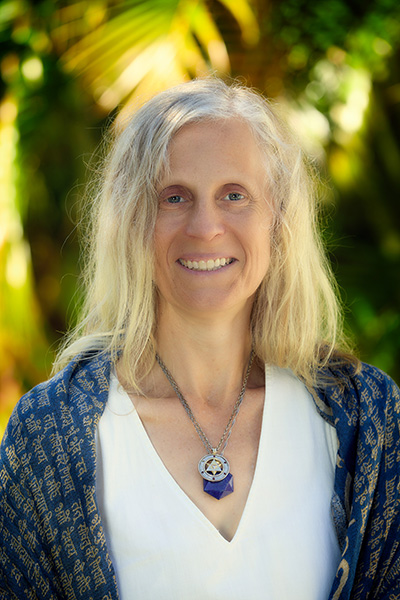
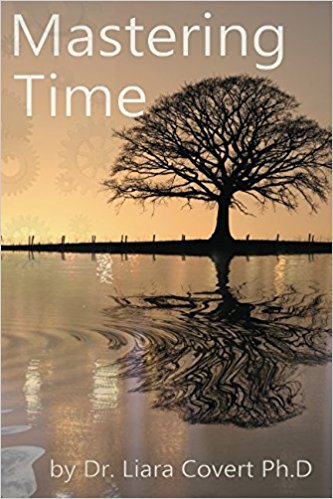



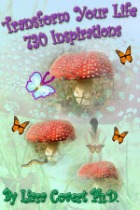

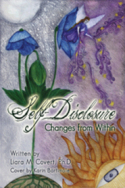
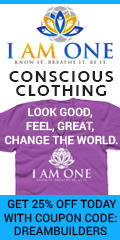

Reader Comments (9)
Thanks for your comment. Managing more than one stage or layer of awakening (whether spiritual, emotional, psychological, or other) benefits from discernment and compassion. Each layer brings new realizations that can shift your identity, worldview, relationships, and priorities. Explore the layers that stand out, and take steps to see how they affect you and integrate. Reach out for supportive tools and mirrors (like communities, therapists, healers, friends, family) as it feels right. The key is to take steps to live the insight you gain, not just to think about it.
Feeling disconnected from the familiar is increasingly common. This can happen when life change feels overwhelming and connections fade. Remind yourself that you are not alone in your experiences. Options exist to navigate through challenging periods sometimes called a mid-life crisis or an unravelling. It's okay to feel lost, hurt, or isolated. Suppressing emotions can magnify them. Allow yourself to grieve the changes and losses and know that the old must fade for new to emerge. Recognizing and accepting your feelings is a key step toward healing.
Consider reaching out to old friends or family you haven't spoken to in a while. Sometimes, rekindling past relationships can provide comfort. Additionally, joining local groups or clubs that align with your interests can introduce you to new people and potential friendships. Engaging in activities that bring you joy can be therapeutic. Whether it's reading, painting, immersing in nature, or listening to music, creative activities can reorient a sense of purpose and refocus your feelings of loneliness.
Talking to a healer or therapist can also offer guidance. Sometimes devising coping strategies and having a safe space to express your feelings feels right. Come what may, be kind to yourself. It's okay to have moments of vulnerability. Remember that healing is a process. It's okay to take it one day at a time.
It takes courage to identify situations that you outgrow. Kudos to you for self-honesty! At times, we outgrow people, or our paths diverge, and in the heart, moving on feels right.
In some cases, difficult relationships perpetuate trauma bonds. Understanding your behaviour and moving on is a transformative journey. Trauma bonds are intense emotional connections formed through cycles of abuse and intermittent reinforcement, making them particularly challenging to break. Yet, the power of intention and inner strength make healing possible.
The first step is to identify that you're in a trauma bond situation. These bonds often involve patterns of manipulation, gaslighting, and intermittent kindness that create a confusing attachment to the abuser. Understanding these dynamics is crucial to begin the healing process. Establishing clear boundaries is essential. This might involve limiting or completely cutting off communication with the person involved in the trauma bond. If no contact isn't possible, setting strict emotional and physical boundaries can help.
Engaging with a healer who specializes in trauma and relationships can provide a safe space to explore your experiences. Therapy can help you gain insight into the underlying reasons for your attachment to unhealthy relationships and guide you to healthier choices. Letting go of a trauma bond involves grieving the loss of the relationship and the hopes you had for it. Processing these emotions is key to healing. Focus on self-care and activities that bring you joy and fulfillment. Rebuilding your sense of self-worth and identity outside of the toxic relationship is key to moving forward.
Surround yourself with supportive friends, family, or support groups who understand your experience. Sharing your journey with others can provide validation and encouragement. Engaging in mindful practices can help you stay present and reduce anxiety. Treat yourself with kindness and patience as you navigate the healing process. Each step you take brings you closer to emotional freedom and personal growth
Thanks for reaching out. Many people relate to your situation. Overcoming self-sabotage is a transformational journey that requires patience, persistence, understanding your behaviors, cultivating awareness, and implementing practical strategies.
Begin by identifying the specific behaviors and thought patterns that constitute self-sabotage in your life. Common examples include procrastination, perfectionism, negative self-talk, and avoidance of responsibilities. These actions often stem from underlying fears, such as fear of failure or success, and often relate to past experiences or low self-esteem. Keeping a journal can help you track self-sabotaging thoughts. Note the triggers, emotions, and outcomes. Deep negative self-beliefs may surface. These beliefs can create a self-fulfilling prophecy, reinforcing destructive behaviors.
When you catch yourself thinking negatively, pause and question this. Replace them with positive affirmations that reflect your true capabilities. Explore what is required for balance. Unrealistic expectations can lead to frustration and self-sabotage. By setting attainable goals, you create a path for success and reduce the likelihood of self-defeating behaviors. Being kind to yourself is crucial. Self-compassion fosters resilience and inner shifts. Treat yourself with the same kindness you would offer a self-sabotaging friend. Engage in regular mindfulness practices to enhance self-awareness and emotional regulation.
Sometimes, overcoming self-sabotage benefits from external support. Therapists can help uncover and address deep issues contributing to self-sabotage. Consider submitting our contact form (www.liaracovert.com), and joining support groups to share experiences and gain insights. Identify healthier alternatives. For instance, replace procrastination with inspiring pursuits.
To build confidence when in a cycle of procrastination requires a gentle but consistent shift in how you relate to action, self-trust, and discomfort. Start small. Confidence grows through consistent action. Break tasks down to the tiniest possible step. Completing small tasks bypasses overwhelm and reinforces the belief: "I follow through." Procrastination is often a fear-based behavior (fear of failure, judgment, or even success). Instead of beating yourself up, ask: “What am I trying to avoid or protect myself from right now?” Then respond with self-compassion and curiosity, not criticism. Confidence thrives in a safe inner environment. Every day, practice finishing something, no matter how small. Completion builds momentum and proves you get things done.
Rather than tell yourself, “I need to stop procrastinating,” replace it with things like: “I take action, I honor my time, and I shift my focus to what encourages rather than discourages me. Recognize that confidence doesn’t come before action—it comes after facing the discomfort. Know that you can feel discomfort and still take a step through and beyond it
Write down what you did today (even if small), do not just notice what you didn’t. This helps shift your focus from deficiency to capability.